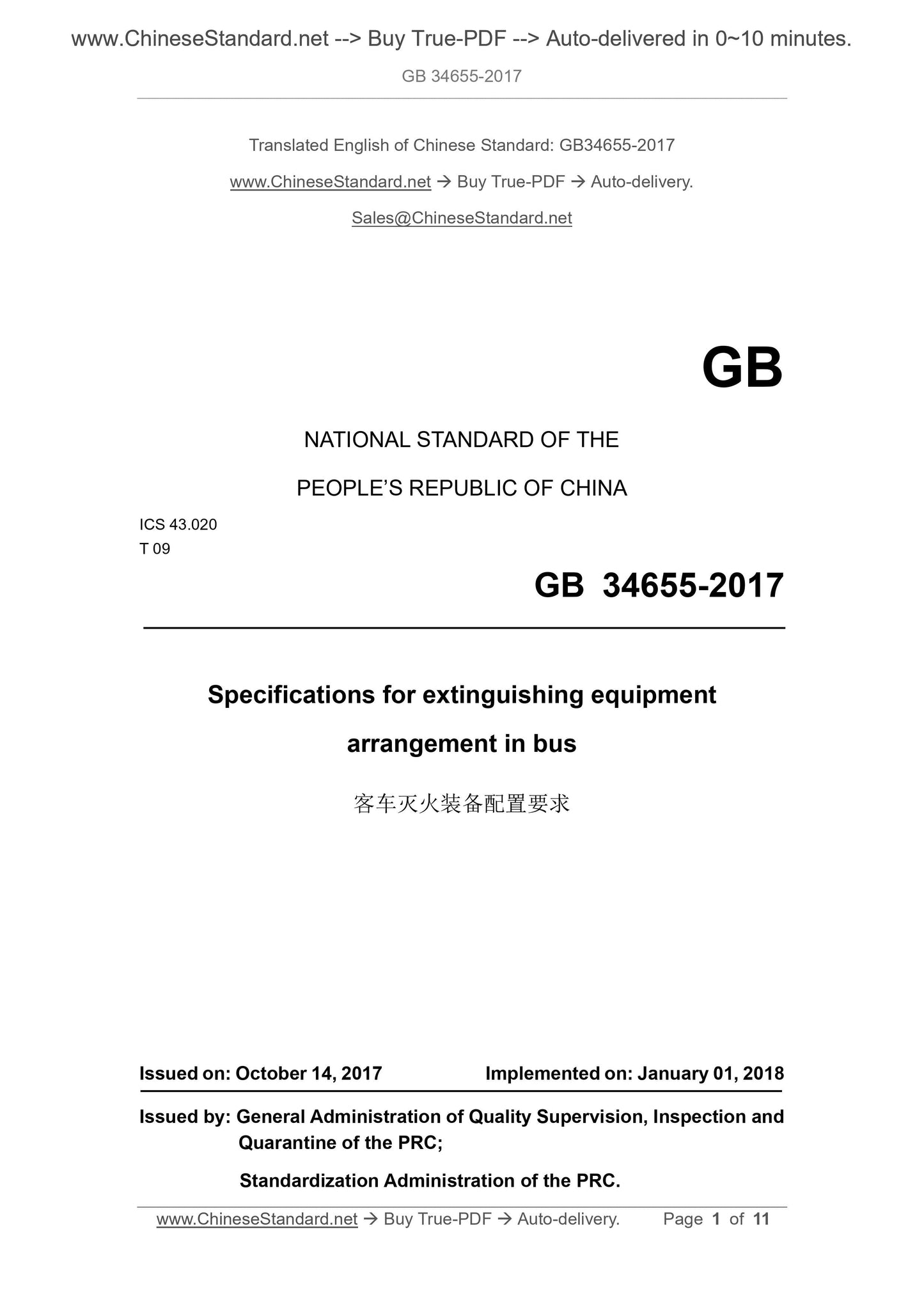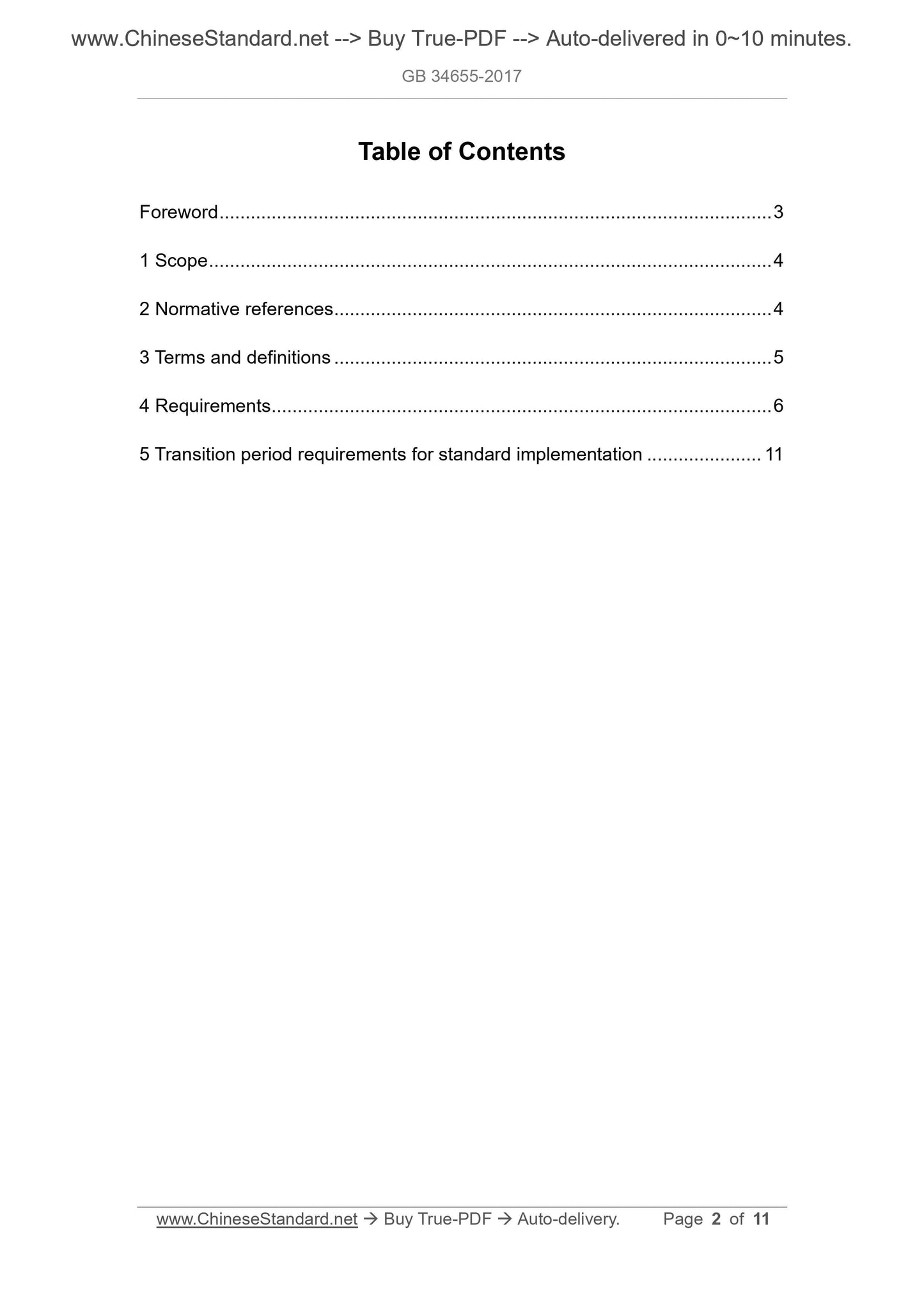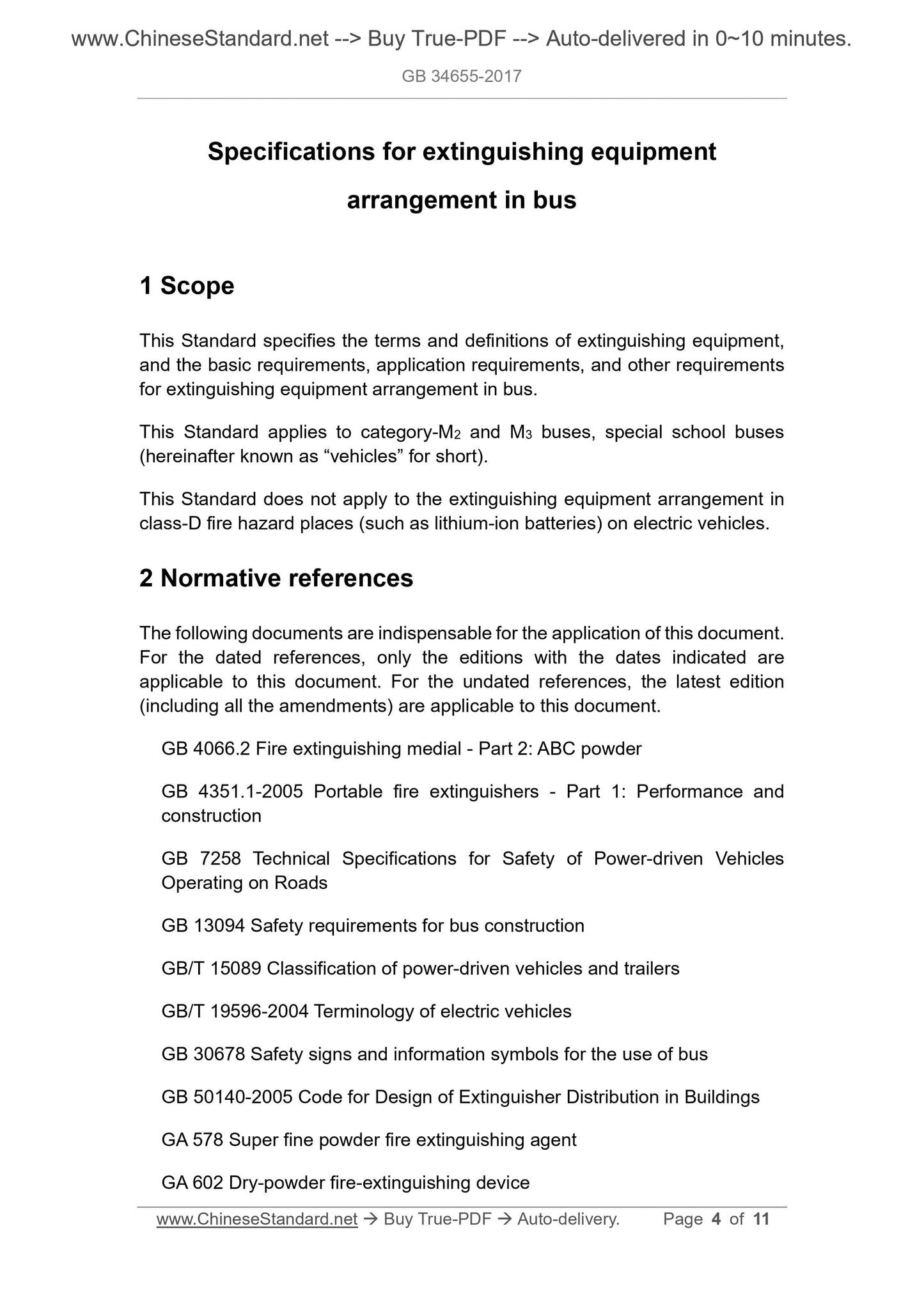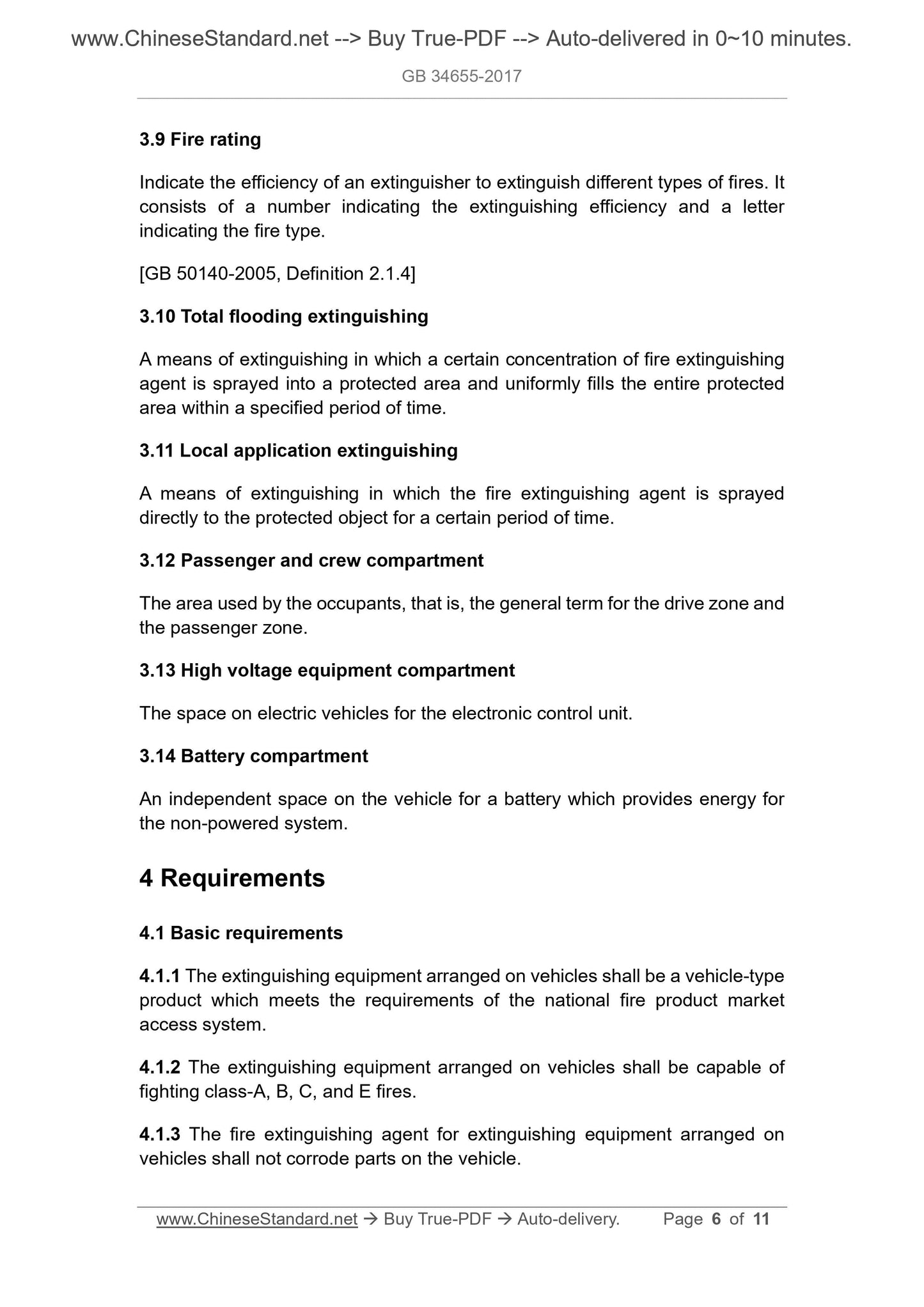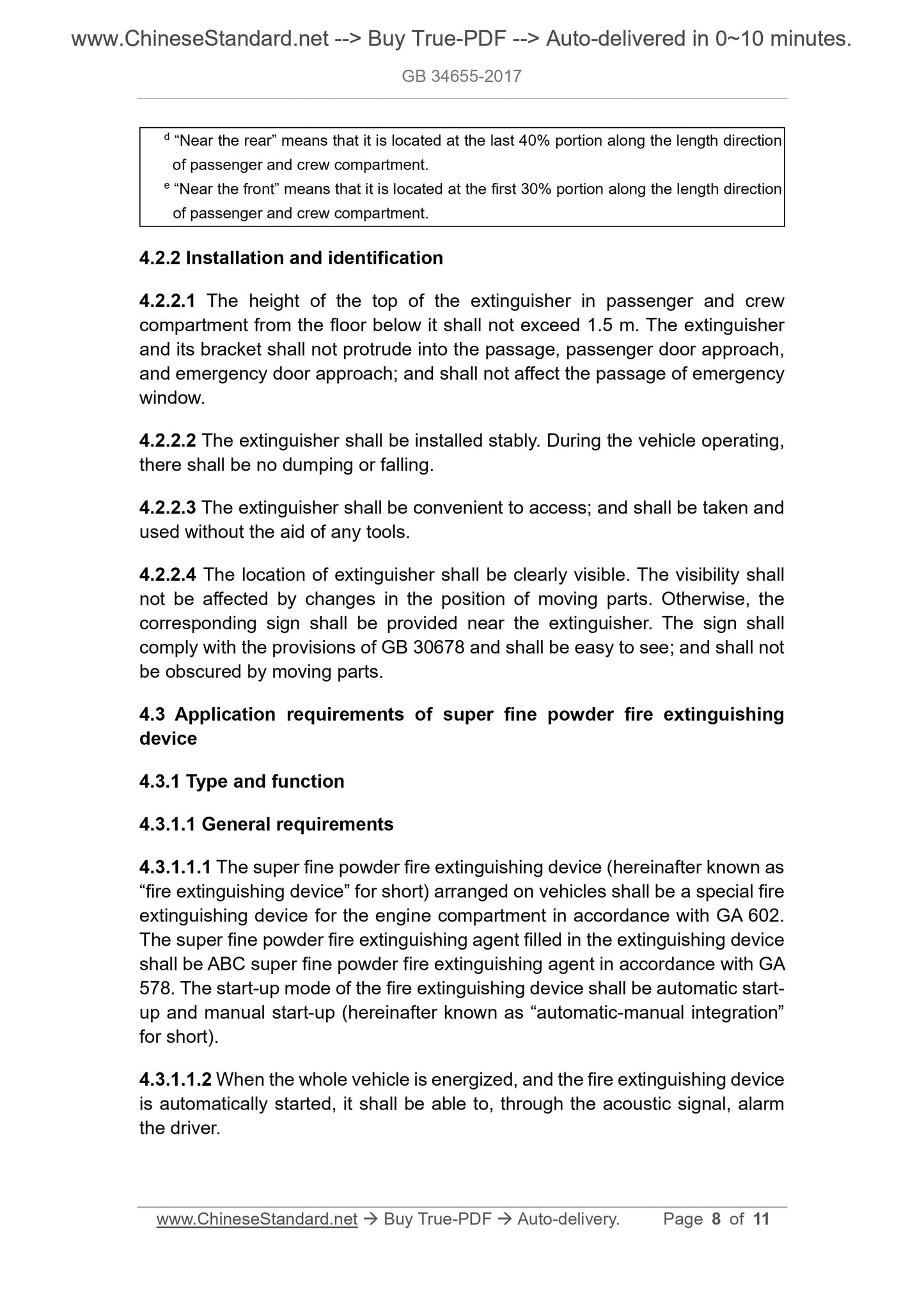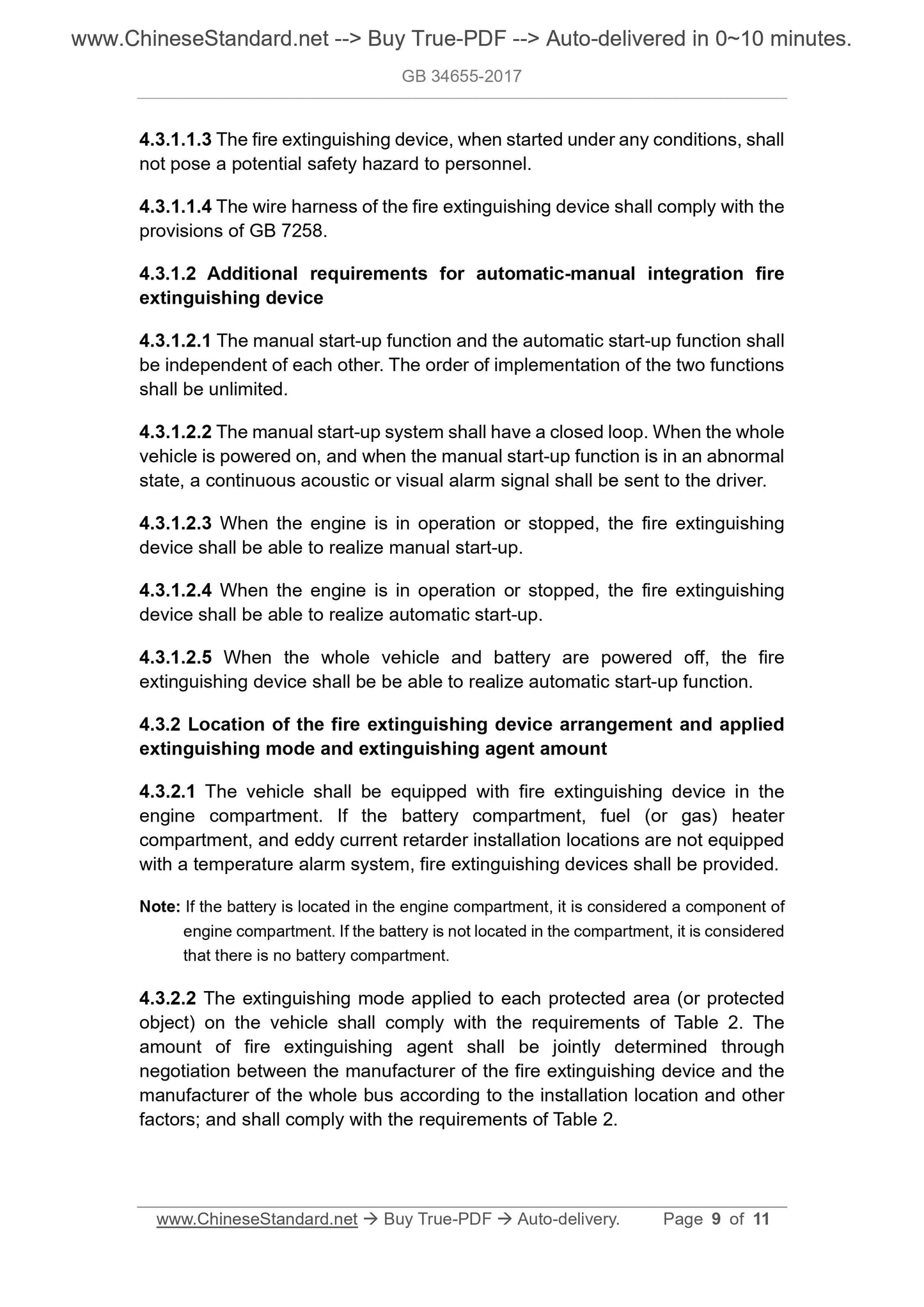1
/
of
6
www.ChineseStandard.us -- Field Test Asia Pte. Ltd.
GB 34655-2017 English PDF
GB 34655-2017 English PDF
Regular price
$150.00
Regular price
Sale price
$150.00
Unit price
/
per
Shipping calculated at checkout.
Couldn't load pickup availability
GB 34655-2017: Specifications for extinguishing equipment arrangement in bus
Delivery: 9 seconds. Download (and Email) true-PDF + Invoice.Get Quotation: Click GB 34655-2017 (Self-service in 1-minute)
Newer / historical versions: GB 34655-2017
Preview True-PDF
Scope
This Standard specifies the terms and definitions of extinguishing equipment,and the basic requirements, application requirements, and other requirements
for extinguishing equipment arrangement in bus.
This Standard applies to category-M2 and M3 buses, special school buses
(hereinafter known as “vehicles” for short).
This Standard does not apply to the extinguishing equipment arrangement in
class-D fire hazard places (such as lithium-ion batteries) on electric vehicles.
Basic Data
| Standard ID | GB 34655-2017 (GB34655-2017) |
| Description (Translated English) | Specifications for extinguishing equipment arrangement in bus |
| Sector / Industry | National Standard |
| Classification of Chinese Standard | T09 |
| Classification of International Standard | 43.020 |
| Word Count Estimation | 10,139 |
| Date of Issue | 2017-10-14 |
| Date of Implementation | 2018-01-01 |
| Issuing agency(ies) | General Administration of Quality Supervision, Inspection and Quarantine of the People's Republic of China, Standardization Administration of the People's Republic of China |
Share
